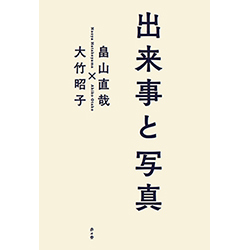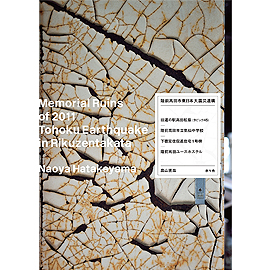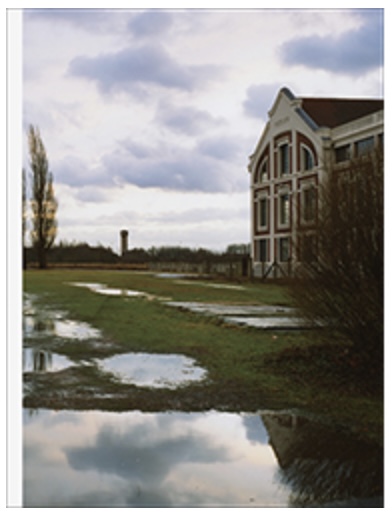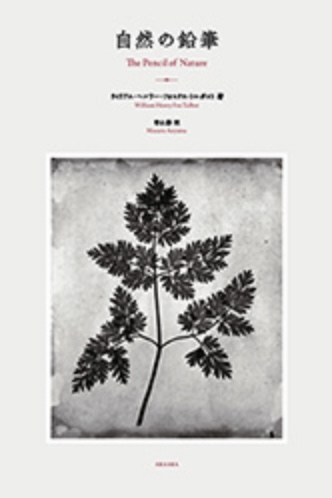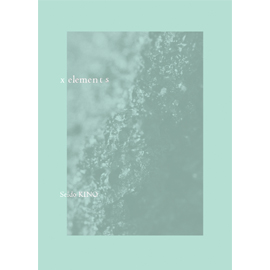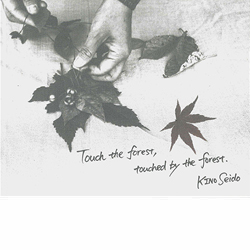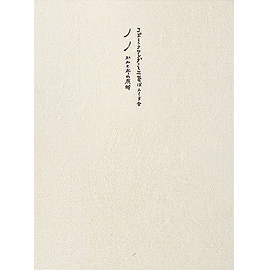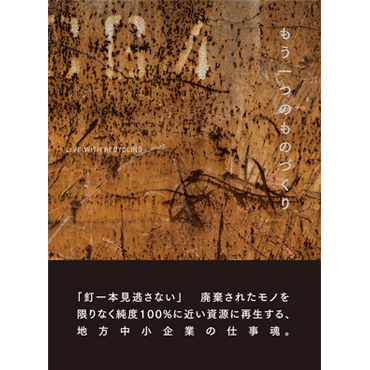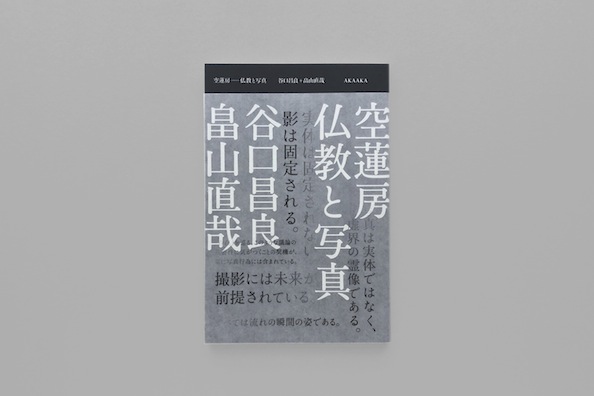
空蓮房 ー仏教と写真ー
谷口昌良・畠山直哉
デザイン:木村稔将
発行:赤々舎 サイズ:190 mm × 130 mm ページ数:176 pages 並製本
Published in September 2019. ISBN: 978-4-86541-098-3
|
¥ 2,500 +tax
送料、代引き手数料 無料!
|
About Book
「実体は固定されない。影は固定される。」ー仏教と写真の邂逅と対話。
2006年に、谷口昌良が寺院の一角に瞑想のための空間として構えた「空蓮房」。
そこで開かれた写真展示を振り返り、その活動と書かれた言葉に思いを巡らす。
谷口が仏教と写真術を同時に考えて語る理由や意義を、畠山直哉によって
「翻訳」し「解釈」したものでもある本文は、いま写真芸術に最も必要とされることは何なのか、
その深化した議論を喚起するための問いかけであり、「祈り」である。
「世の中には数多の言葉や表現がある。だがその中でも、たとえ表面上は『簡単な』ものに見えたとしても、
結局はこのような『簡単ではない思考』の真実に触れようとしている言葉や表現だけが、
主義主張や立場の違いを超えて、また時代を越えて、語り継がれるものになっているとは思わないだろうか。
その真実はまた、僕たち全員を深いところで動かしている『生の動機』あるいは『リアリティ』と
呼ぶべきものに繋がっているとは、思わないだろうか。その真実を求める心の動きを、
たとえば『祈り』や『たましい』と表現して、どこが間違いだろうか。」 畠山直哉 序文より
【目次より】
「無常光下の人像」およびいくつかの文章について
「写真は実体ではなく、虚界の霊像である。」(谷口)
「つまり、写真に写る光は『マーキュリアル=無常』、写真が写るための光は
『パーペチュアル=常』と言い換えても、間違いにはならないのではないか?ということなのです。」(畠山)
「空点からの放光線」について
「作家がものの創造に至る時、その空点に慈悲の根源をかいま見る。」(谷口)
「僕は前の文章で、ギャリー・ウィノグランドに関して『思うようにならない世界に敢えて飛び込む』と
表現しましたが、そこに開ける『リアル』な眺めとはどのようなものか?と考えれば、
それは『自我』とか『物語』とか『イメージ』とかいったもの一切から遠く離れた、ただの眺め、
『現象』としか呼べないような、ただの『ありのまま』の眺め、つまり『空』としての眺め
ではないかと思われてきます。」(畠山)
「日本人であることの写真」について
「私の中に、かすれた畳とざらつく素足の間にあるようなヴォキャブラリーがいまだ残るのである。」(谷口)
「たとえば『禅』あるいは『仏教』を、『自己意識と世界との出会いをどう捉えるか』といった、
西洋の現象学にも通じるような思想的話題としてざっくりと理解し、そのような目で写真史を
眺め直してみると、カルチェ=ブレッソンやロバート・フランク、それ以前の......」(畠山)
対話 谷口昌良×畠山直哉
空蓮房 Archive・展覧会一覧
【掲載作品】
畠山直哉・ギャリー・ウィノグランド・レオ・ルビンファイン・須田一政 他 展示風景多数
Artist Information
谷口昌良
1960年東京生まれ。「空蓮房」を敷地内に構える蔵前・長應院の住職。
1979年に渡米後、写真家レオ・ルビンファイン氏に師事し、80年代のアメリカの写真家と多くの交流を持った。
1984年~1990年には、ロサンゼルスにて浄土宗の開教使に着任。
90年に帰国後、2006年に「空蓮房」を設立。2014年には自身が有する多くの写真作品コレクションを
サンフランシスコ近代美術館および東京国立近代美術館に寄贈する。
畠山直哉
写真家。1958年岩手県陸前高田市生まれ。筑波大学芸術専門学群で大辻清司に師事する。
1984年に同大学院芸術研究科修士課程修了。以降東京を拠点にしながら、
自然・都市・写真のかかわり合いに主眼をおいた一連の作品を制作する。
「Lime Works」、「Blast」、「Underground」、「River Series」などこれまで発表してきた作品シリーズは
いずれも国内外で高い評価を得ており、数多くの展覧会に参加してきた。
その作品は、テート(ロンドン)やニューヨーク近代美術館、東京国立近代美術館など
各国の主要美術館にコレクションされている。
Related Items
Posted at : 2019.09.20 16:52
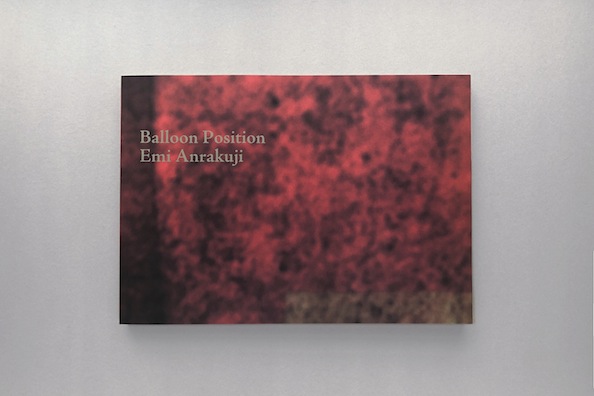
安楽寺えみ 『Balloon Position』
表紙デザイン:安楽寺えみ
発行:赤々舎 サイズ:257mm × 364mm(B4変型) ページ数:208 pages
first edition:500
並製本
Published in September 2019. ISBN: 978-4-86541-102-7
|
¥ 7,000 +tax
送料、代引き手数料 無料!
|
About Book
幻の手製本が生き返る。虚無と孤独のなかに浮かび上がる、魂のゆくえ。
この度、赤々舎では、安楽寺えみが20年前に撮影したシリーズ「Balloon Position」を刊行致します。
セルフポートレートに位置づけられるこのシリーズは、ハンドメイドの写真集として秘蔵され、
これまで発表されることはありませんでした。
フィルムを気に入った紙に現像し、ノイズもまた作品の一部として完成させたそれは、紙と特殊なインクの狭間から、分裂し粉々になった自己が再構築されて現れるような衝迫に満ちています。
本書は、その一冊を再現しつつ、現在において新たな命を吹き込むものです。
ふくらんだりしぼんだりするバルーンの中で、現実との距離に隔てられ、
浮かんでは流れゆく無数のドットを追う時間。
内なるカオスと外部のカオスとがぶつかり、死に近く、宙吊りの生。
その虚無感と孤独のなかで、私たちが愛し怖れるものを表現しています。
自己を媒体とし、詩的かつ哲学的な深淵を訪ねる、
安楽寺のセルフポートレートの結晶とも言える「Balloon Position」。
ひとつひとつ、息を吹き込むかのように、手描きのペイント、手作りのオブジェで画面が構成されています。
そして、208枚の写真が重層して立ち現れる、生のドキュメントのドキュメントは、ひとつの「遺書」として
光を刻み込んでいます。
"如何なる言葉をもってしても、私はこの写真集の説明はできない" 安楽寺えみ
Emi Anrakuji "Balloon Position"
Through Cyclopean gaze, literally the artist's vision, impaired by suffering a brain tumour,
attempts to reconstruct the shattered self that was suspended between conflicting internal and external chaos,
life near death, eternal rainfall, gives herself to the construction of a handmade book.
Balloon Position an appropriation, a facsimile of that dummy, a document of a document.
Anrakuji, a medium, photographic shaman, seeking through, literary, poetical, philosophical references in her enquiries.
Presenting what we love and fear.
Artist Information
安楽寺えみ
東京生まれ。武蔵野美術大学にて油絵を学ぶ
卒業後まもなく、視力の深刻な悪化を引き起こす脳腫瘍と診断され、画家になる夢を断念した。
10年にわたる療養の過程で、ある日、安楽寺はカメラが目の代わりになりうることを発見し、
病院のベッドで写真を独学で学んだ。
安楽寺の人体への執着は、長い入院生活がもたらしたものとも言える。
安楽寺はイメージの錬金術師であり、空想と欲望の触媒とも評される。
2006年、東川賞新人作家賞を受賞、2018年には、ルーシー・フォトブック・アワードの
ファイナリストの1人に選ばれた。
Paris Photo-Aperture Foundation 「The 2019 PhotoBook Awards」PhotoBook of the Year 部門選出。
Emi Anrakuji was born in Tokyo, Japan.
She studied oil painting at Musashino Art University in Tokyo.
Soon after her graduation, she was diagnosed with a cerebral tumor which caused a severe degradation of her eyesight.
The illness forced her to abandon her aspiration to become a professional painter.
In the course of a decade-long recovery, one day she discovered that a camera can be a replacement of her eyes then began teaching herself photography at her hospital bed.
Anrakuji's obsession with the human body is a result, in part, from her long periods spent hospitalized.
In her art, Anrakuji is an alchemist of images and a catalyst for daydreams and desires.
She is the author of critically acclaimed monographs, including her most iconic work IPY and MISHO which was selected as one of the finalists under the independent category of Lucie Photo Book Prize in 2018.
shortlisted for The PhotoBook of the Year Prize (The Paris Photo-Aperture Foundation 2019 PhotoBook Awards).
Anrakuji's work continues to be exhibited and collected worldwide.
signing

Posted at : 2019.09.20 14:47
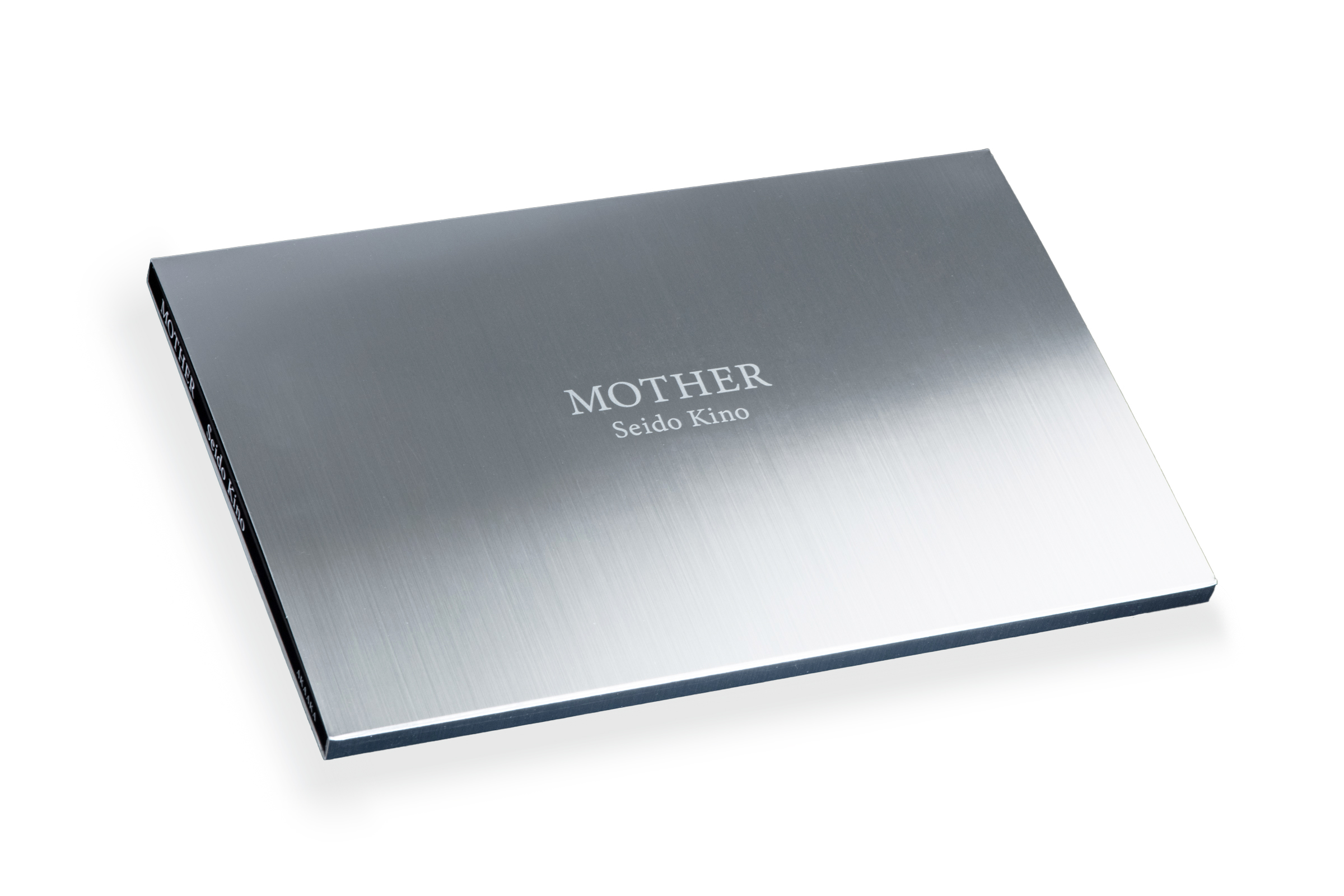
紀 成道『MOTHER』
Book Design:中島雄太(YUTA Design Studio)
発行:赤々舎
Size:H199mm × 299mm
Page:128 pages
Binding:Softcover with slipcase
Published in August 2019
ISBN:978-4-86541-097-6 |
¥ 4,000+tax
国内送料無料!
お支払い方法は、PayPal、PayPay、Paidy
銀行振込、郵便振替、クレジットカード支払いよりお選び頂けます。
|
About Book
製鉄と金型の現場を通して見る日本のいま
製鉄所の中核設備である高炉(神や魂がものに宿るとする日本古来の考え方は、鉄を生きものとみなし、高炉は母胎にも例えられていた)。紀は学生時代にその化学反応を研究した経歴を生かし、広島県福山市の製鉄所で行われている技能継承を取材しました。現場では団塊の世代とミレニアル世代が協働しつつも、仕事に対する価値観の違いが見受けられ、その一因として、高度成長により面影がなくなるほど発展した街の姿に着目します。地元の方々の協力を仰ぎ、昔の写真を重ね合わせることで、時間による隔たりと通底するものを可視化しました。その後、外国人労働者がともに働くようになった父親の町工場を訪れ、成長を追い求める新興国が日本に浸透していく現状を目の当たりにします。これらふたつの製造現場から、日本のいまを伝える試みです。
Artist Information
紀 成道
1978年 愛知県名古屋市生まれ2003年 京都大学工学部卒業(鉄冶金専攻)日本の抱える課題と克服の過程を見つめる。テーマは人・物・場・時・思考の「接点」。書籍でこそできること、展示でこそできることを意識し、制作に取り組んでいる。
2016年 コニカミノルタ「フォト・プレミオ」大賞2017年 Touch the forest, touched by the forest.(赤々舎)刊行。2018年 土門拳賞 最終候補、林忠彦賞 最終候補 LUCIE PHOTOBOOK PRIZE(米国)最終候補
Related Items
Posted at : 2019.08.22 14:41
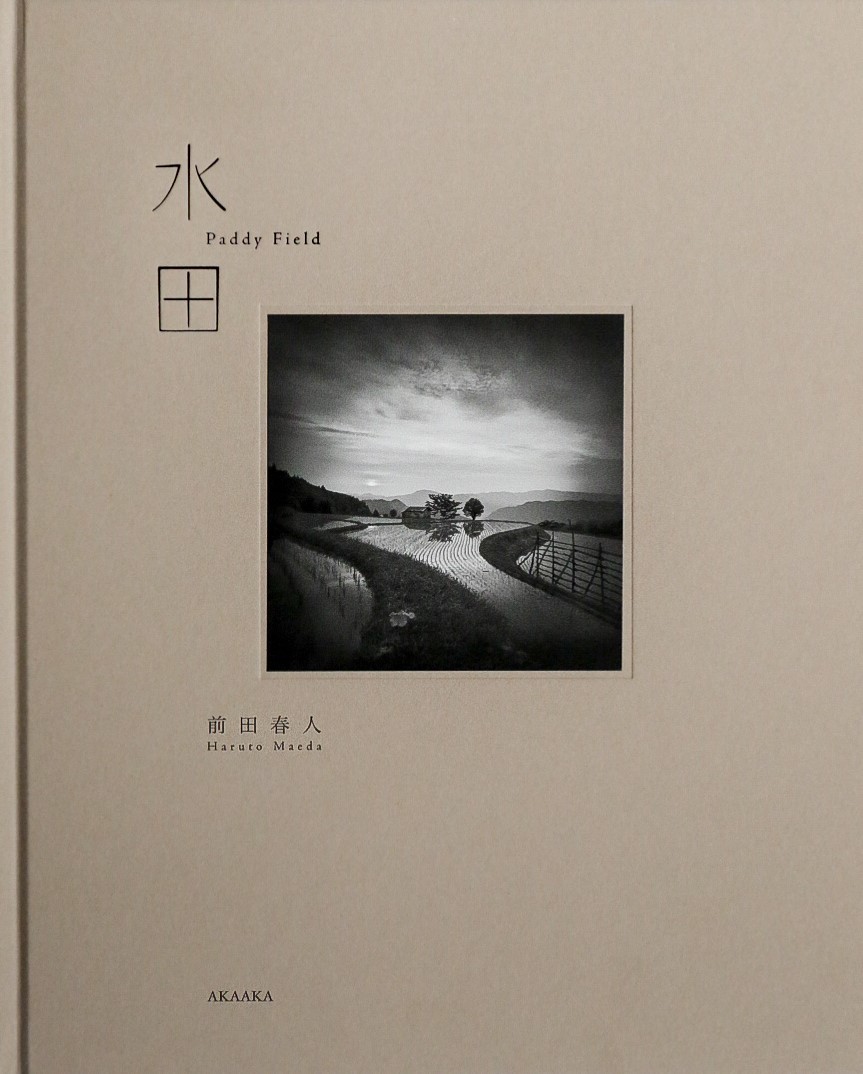
前田春人 『水田 / Paddy Field』
装訂:大西和重 大西未生(株式会社 ザイン) 翻訳:ディアース・治子 発行:赤々舎 サイズ:275mm × 225mm ページ数:96 pages 布装・上製本
Published in June 2019. ISBN: 978-4-86541-095-2
|
¥ 3.800 +tax
送料、代引き手数料 無料!
|
About Book
棚田の陰影、稲穂の光 ─ 山里に残る水田風景との出会い。
兵庫の但馬地方、新潟の松之山町を中心に、九州は長崎から東北の山形まで、水田風景を探し求めた20年の集成。 雲間の光が田んぼを照らし、霧が早苗を包み込む。 海を臨む棚田が、一枚一枚、雲を映し出す。 十段前後の高さに組まれた稲架(はぜ)に、豊かな稲穂が掛けられる。 一面の雪に覆われた田を、動物の足跡が行く。
人々の手が作り上げ、受け継がれていく水田も、減少の一途を辿りつつある。 現代の社会が抱える問題を反映して、消えゆく水田の景観はある。 大型カメラを据え付けた三脚を担いで、田んぼとそこに生きる人々との出会いを静かに写し出した一冊。
Artist Information
前田春人(まえだ はると)
1963 年、兵庫県生まれ。
写真家・樋口健二氏よりフォト・ドキュメンタリーの基礎を学ぶ。
1992 年、ジョハネスバーグに滞在し、新生南アフリカが誕生するまでの
激動した時代に生きる民衆の姿を撮影。写真展、雑誌等で発表。
1998 年、日本各地を旅しながら、山里に残る田んぼの撮影を始める。
2003 年、写真集『Quiet Life』(青幻舎)で、日本写真協会新人賞を受賞。
Haruto Maeda
1963, born in Hyogo Prefecture, Japan
Learned the basics of making photo documentaries from Kenji Higuchi
1992, lived in Johannesburg. Photographed scenes of ordinary people who had lived during the period of time before the new democratic South Africa was established.Showed his work at galleries as well as in magazines.
1998, began traveling throughout Japan to photograph the rice paddies in mountain villages.
2003, Maeda was awarded the "The Photographic Society of Japan Emerging Artist Award" for his photo book "Quiet Life" (by Seigen-sha).
Posted at : 2019.07.07 00:38

山沢栄子 『私の現代』
造本設計・デザイン:大西正一
発行:赤々舎 サイズ:204 mm × 297 mm ページ数:224 pages 布装・上製本
Published in June 2019. ISBN: 978-4-86541-096-9
|
¥ 3.500 +tax
送料、代引き手数料 無料! |
About Book
写真による造形の実験を重ね、独自の抽象表現を拓いた先駆者。
生誕120周年に際して、西宮市大谷記念美術館(2019年5月25日ー7月28日)と東京都写真美術館(2019年11月12日ー2020年1月26日)で大規模個展が開催される山沢栄子。
1970―80年代に手がけたカラーとモノクロによる抽象写真シリーズ<What I Am Doing>を中心に、抽象表現の原点を示す1960年代の写真集『遠近』を収載する。
『遠近』には、土門拳が以下の推薦文を寄せた。「日本写真界に人多しといえども、山沢さんのような写真家は全く独自な存在である』。
また、戦前の活動を伝えるポートレートや、アメリカ近代写真との関連を示す資料、疎開中の写真など、158点の図版を収載する決定版。
日本の写真の流れとは異なる地平で創作を続けた芸術家の歩みを辿り、女性写真家の草分けとして山沢栄子の「ひとつの道」を示す。
テキスト/池上司・鈴木佳子 年譜、主要参考文献
「日本にかえると日本の写真を改善しなければならないと考え、みんなのやっているような種類の写真はしたくないと思った。その気持ちが今でも私を動かしている。それから二十五年の時間がたっている。いろいろのことがあった。戦争という大きなことまでも。しかし私は写真の仕事とはなれた時はなかった。」
(山沢栄子「女流写真家として40年」より)
This catalogue was published for Eiko Yamazawa's first posthumous retrospective that was co-organized by the Otani Memorial Art Museum, Nishinomiya City and the Tokyo Photographic Art Museum in 2019.
Born in Osaka in 1899, Eiko Yamazawa studied photography in the United States in the 1920s and opened a portrait studio in Osaka in 1931 as the first female professional photographer in Japan.
After retiring in 1960, she was engaged in creating abstract color photography that finally achieved conceptual and experimental expression. However, Yamazawa's work has never been examined in detail before, because her distinctive style had nothing in common with the mainstream of photographic circle in Japan.
As a result, she has been largely forgotten since her death in 1995. The main purpose of this book is therefore to situate her work in the history of photography beyond a national framework by examining her career in relation to American photography.
Consisting of four chapters, the book is composed backwards in time, to explore the background of Yamazawa's abstract photography. The first chapter features Yamazawa's abstract photography series What I Am Doing from the 1970s and 1980s, which includes highly conceptual and self-reflexive pieces in which she shot her camera supplies as well as re-photographing her work from the past.
The second chapter reproduces Yamazawa's 1962 photo book Far and Near in its entirety, the third presented examples of American photography that she was exposed to, and the last examines her early portraits and related documents to clarify the starting point. This composition allows us to trace Yamazawa's long career as a photographic artist who continued to create work on a different plane than the mainstream of Japanese photography.
The book also includes essays by two curators based on their recent research, reprints three essays penned by Yamazawa from the 1920s and 1950s, and a detailed biography and bibliography.
Artist Information
山沢栄子(1899-1995)
大阪に生まれる。1918年私立女子美術学校日本画科選科を卒業。1926年渡米し、カリフォルニア・スクール・オブ・ファインアーツで油絵を学ぶ。
同時にアメリカ人写真家コンスエロ・カナガの助手となり、写真技術を習得。
1929年帰国、1931年大阪に写真スタジオを開設し、ポートレート写真家として活躍。戦後は企業の広告写真などを手がけたのち、抽象写真の制作を始めた。
1968年神戸に移り、1970-80年代に「私の現代」と題した個展を多数開催。
1955年大阪府芸術賞、1977年日本写真協会功労賞、1980年神戸市文化賞を受賞。大阪中之島美術館、東京都写真美術館、川崎市市民ミュージアムなどに作品収蔵。
Eiko Yamazawa (1899-1995)
Born in Osaka, Japan in 1899, Eiko Yamazawa graduated from the nihonga (Japanese-style painting) department at the Private Women's School of Fine Arts in Tokyo in 1918.
She traveled to San Francisco in 1926 and studied oil painting at the California School of Fine Arts until 1927.
During this time, she also learned photography as an assistant of the American photographer Consuelo Kanaga.
In 1928, she moved to New York City and worked for Nickolas Muray before returning to Japan in 1929 to open her own photography studio in Osaka in 1931. During the World War II, she evacuated to Nagano Prefecture where she continued to take portraits. As air raids destroyed her studio, she made living by producing advertisement photography after the war. In 1955, she revisited New York City to meet Kanaga, and began making abstract color photography in about 1957. In 1962, her first photo book Far and Near was published.
In the 1970s and 1980s, she held numerous solo exhibitions titled What I Am Doing to show her abstract photography.
In 1994, her solo exhibition was held at the Itami City Museum of Art, marking her only museum exhibition during her life time. In 2019, her first posthumous retrospective was held at the Otani Memorial Art Museum, Nishinomiya City and the Tokyo Photographic Art Museum. Her works are in the collection of the Tokyo Photographic Art Museum, the Kawasaki City Museum, and the Nakanoshima Museum of Art, Osaka.
関連展覧会
生誕120年 山沢栄子 私の現代
西宮市大谷記念美術館
会期:2019年5月25日(土)〜7月28日(日)
東京都写真美術館
会期:2019年11月12日(火)~2020年1月26日(日)
Posted at : 2019.06.12 12:45

